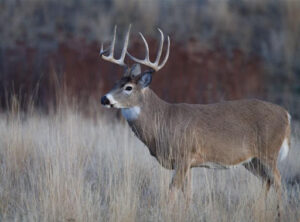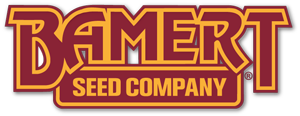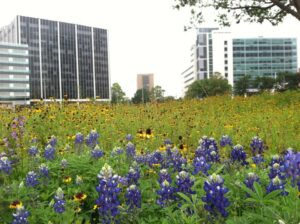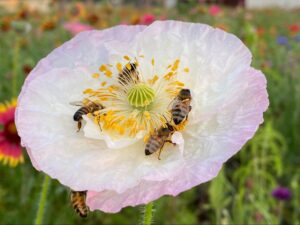It’s difficult to imagine a more peaceful mental image than looking out from your back porch watching prairie grasses swaying gently in the breeze while local wildlife put on a show: birds chirping, deer grazing in the distance, bees buzzing lazily, frogs croaking. If you’re lucky, you might even spot a pheasant in the distance.
Creating a wildlife habitat using native grasses and forbs can make this dream picture a reality
 Native grasses, forbs, and legumes lay the right foundation for creating wildlife habitats. Transforming your piece of this great nation into a wildlife sanctuary might seem challenging, but our team has decades of experience to help you create a plot of land that will attract the wildlife you want, all while promoting biodiversity and improving soil health and water quality.
Native grasses, forbs, and legumes lay the right foundation for creating wildlife habitats. Transforming your piece of this great nation into a wildlife sanctuary might seem challenging, but our team has decades of experience to help you create a plot of land that will attract the wildlife you want, all while promoting biodiversity and improving soil health and water quality.
Below, we share some insight into establishing a wildlife habitat using native grasses. The native species will help you create a space that is abundant with wildlife, whether your goal is strictly conservation or establishing fertile hunting ground.
Wildlife Habitat Using Native Grasses: Establish Biodiversity
Native habitats are vanishing rapidly. Shrinking grasslands and the loss of natural food sources have led to declining populations of many species that once roamed the plains. By creating a wildlife haven on your land, you offer a lifeline to these creatures, providing food, shelter, and escape cover for them to raise their young.

Native grasses and forbs are not only perfectly adapted to your region, soil, and climate, they’re also the ideal food and shelter for the very species you want to attract to your land. Their deep roots improve water filtration and nutrient cycling, helping to keep water sources like playa lakes available longer. Because wildlife are naturally attuned to what is most nutritious and available in winter, spring, summer, and fall, native grasses, forbs, and legumes are an ideal food source in any season. By attracting and supporting a healthy wildlife population, you’re ensuring a rich and fertile ground for years to come.
Conservation isn’t only about saving endangered species. Farmers and ranchers know this. It’s about preserving a way of life, a proper level of biodiversity in nature that’s been developing for thousands of years. By creating a wildlife habitat using native grasses and forbs, you’re helping to keep that biodiversity intact. Wildlife flourish, pollinators thrive, and threats of soil erosion or lost water are lessened. To top it off, native grasses and forbs are high in protein, which is good for both grazing livestock and providing varied and nutritious food sources for wildlife through the seasons.
Native Grasses and Forbs are Power Players in Wildlife Conservation
Planting the proper blend of native grasses and forbs is important. Biodiversity is what we see in nature and is what makes a well-stocked arsenal. In a blend, each species grows at a unique rate, some in warm seasons and some in cool seasons. This is a gift to animals and birds such as pronghorn antelope, mule deer, whitetail deer, javelina, Chachalacas, quail, and wild turkey–and of course, many more.
Beyond nourishment, native grasses and forbs also offer crucial refuge for wildlife. Their growth pattern naturally forms protective canopies that serve as sanctuaries from predators and harsh weather conditions. Just as we seek shelter during inclement weather, wildlife also requires these natural havens to survive and thrive.
During the winter months, some native grass species continue to stand tall, providing cover even under layers of snow. This resistance to harsh conditions creates a year-round safe space for wildlife.

When it comes to avian wildlife, particularly ground-nesting birds, native grasses are indispensable. They offer an ideal environment for nest-building and nurturing offspring. The unique structure of these grasses creates ideal conditions for such birds to nest, find food, and hide from predators.
In essence, native grasses and forbs provide food, shelter, and breeding spaces. Their pivotal role in local ecosystems is evident, and it’s clear that the conservation of these species can greatly enhance biodiversity and promote healthier environments.
Creating a Wildlife Habitat Using Native Grasses on Your Land
Choosing the right native seed blend for your land’s wildlife habitat requires understanding their unique characteristics and purposes. This is where a tool
such as Seed-Spec can be incredibly beneficial for ensuring you choose the right natives for your needs. Once you enter the location of your project, Seed-Spec will provide you with a custom native seed blend best adapted to your soil type and climate.
Our team of Reclamation Specialists all have backgrounds in wildlife and livestock management. They have decades of experience that allows them to identify the specific needs for your project and offer insight and expertise into planning your project and successfully planting your native seed.
In the chart below, you can see some of our most popular blends for wildlife and the advantages they offer.
Bamert Blends and Seeds
Details
Wildlife
Wildflower blend contains both perennials and annuals that are native to most areas in Texas.
Pollinators
- Blend of multiple annual and perennial flowers provides outstanding pollinator habitat for birds, bees, and many other species.
- The colorful mix of blooms will last all season long
Pollinators, Birds
Our most popular blend, offers a multitude of benefits to wildlife:
- Bunchgrasses for nesting cover for ground nesting birds (upland species and others)
- Cool-season grasses provide winter forage for all animals (deer, turkey, and quail)
- Extended flowering periods throughout the growing season for pollinators
- Forbs and legumes provide excellent deer browse high in protein
- Includes all perennial species which require little to no annual maintenance
- Year to year food plot (no replanting annually)
Upland birds, deer, turkey, quail, pollinators
- Formulated based on our company’s 60-plus years of experience
- Offers both perennial and annual species
- Unique blend attracts both deer and pollinators
Deer, pollinators
- Formulated from our company’s 60-plus years of experience
- Offers the lush green appearance to draw ’em in
- Unique blend attracts a variety of upland game species
- Highly palatable
- Very economical and easy to plant
Variety of upland game
This Fall Food Blend:
- Is uniquely formulated to offer Fall, Winter, and Spring forage availability and stand longevity
- Formulation based on our company’s 60-plus years of experience
- Will grow on a wide range of soil types
- Fall, Winter, and Spring forage grasses offer a lush green appearance to draw ’em in: Oats, Wheat, Rye, Triticale, and Annual Ryegrass
- Contains legumes for added browse and protein value: Purple Top Turnips, Arrowleaf Clover, Hairy Vetch, Austrian Winter Pea, Alfalfa
Deer
- Blend of drought-tolerant native bunchgrass to create structural nesting habitat, predation cover, and shelter.
- Also offers a diversity of forbs and legumes as a primary food source throughout multiple-bloom periods.
Upland birds
This is a cereal grain blend:
- Formulation based on our company’s 60-plus years of experience
- Offers the lush green appearance to draw ’em in
- Provides high crude protein necessary for fast antler growth
- Highly palatable
- Excellent cold tolerance
- Very economical and easy to plant
Whitetail deer
- Formulated from our company’s 60-plus years of experience
- Offers the lush green appearance to draw ’em in
- Unique blend attracts a variety of upland game species
- Highly palatable
- Very economical and easy to plant
Deer, Turkey, Pheasant, Quail
- Grows easily, succeeds in a variety of soils
- Good for grazing and wildlife forage
- Beneficial to the native ecosystem
Birds, Small Mammals, Pollinators
- Attracts grazers
- Versatile, warm-season perennial
- Popular for landscaping and reclamation
Nesting for pheasants, quail, deer and rabbits; Seeds feed pheasants, quail, turkey, doves, songbirds
- Successful growth is a sign of a healthy ecosystem
- Deep roots help to stabilize river banks
- Good livestock grazing
Cover for ground-nesting birds, deer
- Native, warm-season perennial
- Excellent livestock grazer, fair wildlife grazer
- Seeds feed ground-feeding birds
Screening and fawning cover for deer, nesting cover for quail and turkey
The Best Time to Plan for or Plant Native Grasses and Forbs is Now
Native grasses possess transformative power, enhancing wildlife habitats and environmental health. They provide essential food and cover for game animals and birds, combat soil erosion, filter and retain water, and nurture biodiversity. Whether you’re a landowner, project manager, or thought leader, native seeds and grasses are indispensable for conservation, hunting grounds, and land management.
As stewards of the land, let’s incorporate these resilient grasses into our endeavors for positive change. Contact Bamert Seed to begin planning your wildlife habitat. Together, we can make a lasting impact on wildlife and leave our land better than we found it.



